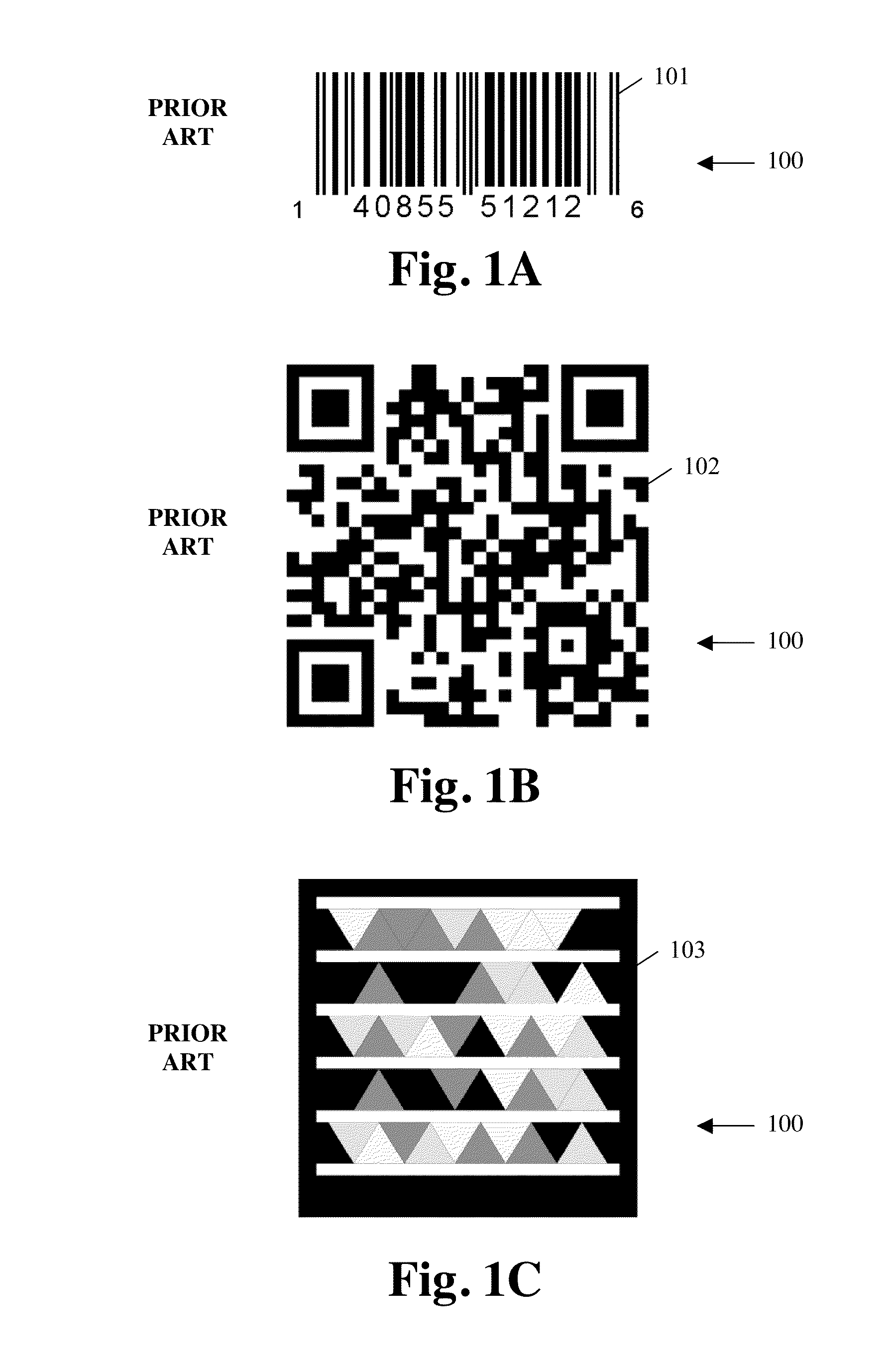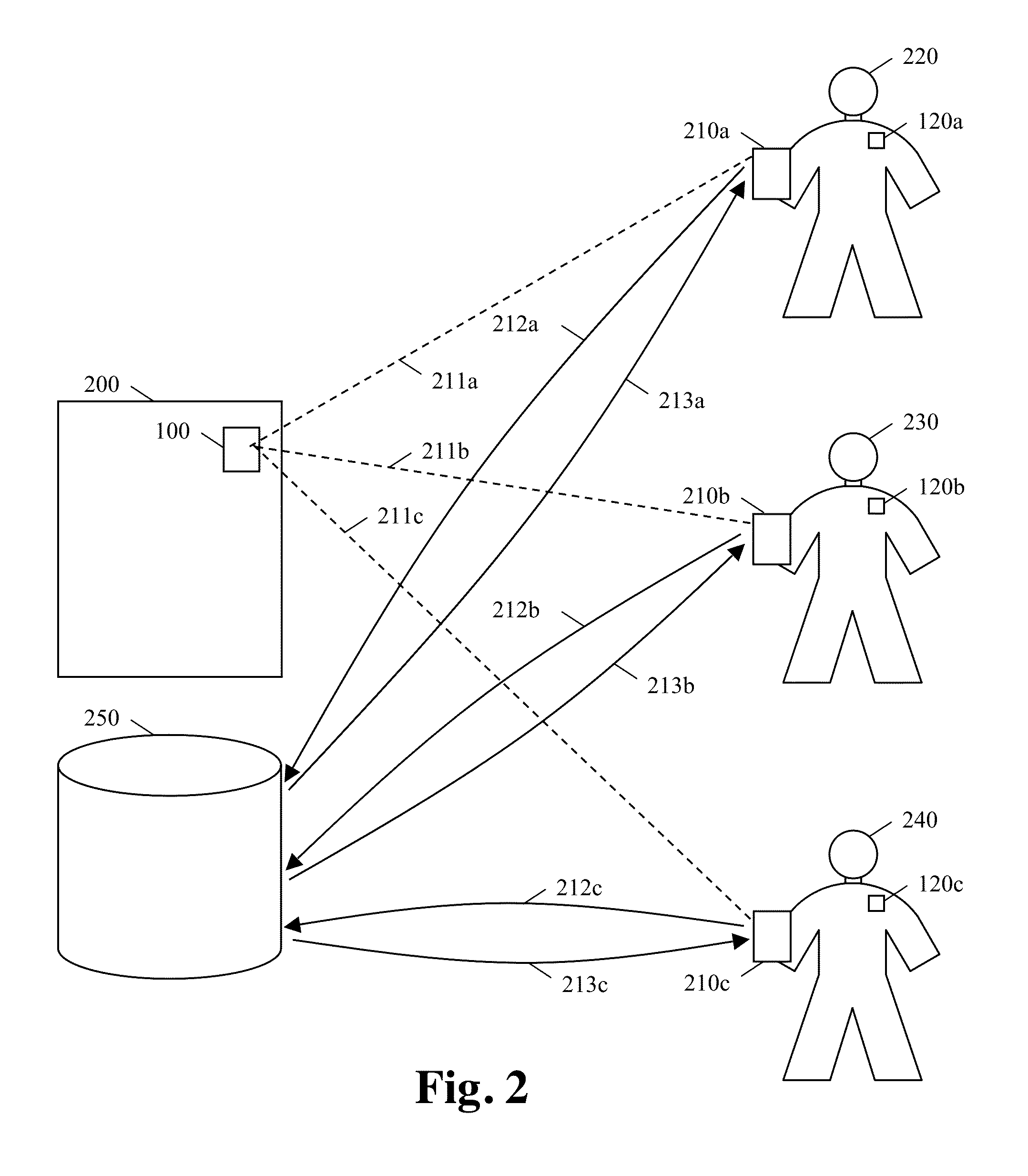Mobile Wireless Object Recognition and Control
a mobile wireless and object recognition technology, applied in the field of object recognition and control, can solve the problems of not being able to achieve a more universal effect by itself, and achieve the effect of effectiv
- Summary
- Abstract
- Description
- Claims
- Application Information
AI Technical Summary
Benefits of technology
Problems solved by technology
Method used
Image
Examples
Embodiment Construction
Prior Art Coded Labels
[0053]FIG. 1A through FIG. 1C show prior art coded labels 100.
[0054]FIG. 1A illustrates an example of a coded label 100 with a barcode, in particular a universal product code (UPC) 101. A barcode or UPC typically represents a number. The UPC system allows each product to have a unique code making the system universal. However, individual products can only be identified with an additional label such a serial number barcode.
[0055]FIG. 1B illustrates an example of a coded label 100 with a quick response (QR) code 102. A QR code 102 has high data density. It can encode free form text and is typically used to encode a direct address of other information such as an URL.
[0056]FIG. 1C illustrates an example of a coded label 100 with a high capacity color barcode (HCCB) 103. A HCCB may also contain a direct address such as an URL.
Handheld Devices Used for Object Recognition and Control and Instruction
[0057]FIG. 2 illustrates a system with people with different roles and...
PUM
 Login to View More
Login to View More Abstract
Description
Claims
Application Information
 Login to View More
Login to View More - R&D
- Intellectual Property
- Life Sciences
- Materials
- Tech Scout
- Unparalleled Data Quality
- Higher Quality Content
- 60% Fewer Hallucinations
Browse by: Latest US Patents, China's latest patents, Technical Efficacy Thesaurus, Application Domain, Technology Topic, Popular Technical Reports.
© 2025 PatSnap. All rights reserved.Legal|Privacy policy|Modern Slavery Act Transparency Statement|Sitemap|About US| Contact US: help@patsnap.com



